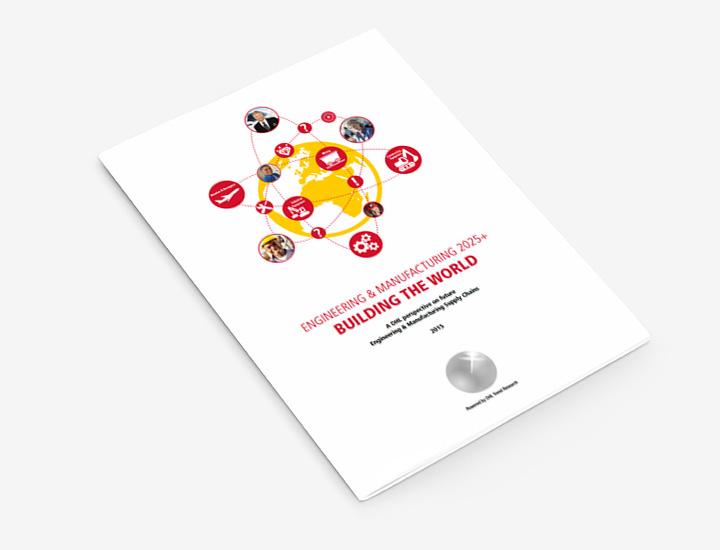
Building the World
Engineering & Manufacturing 2025+
Publisher: Deutsche Post DHLYear of Publication: 2015
Regional and resilient: supply chains of the future
“Markets are shifting. Today, machine components are manufactured in China before being distributed all over the world. In the future, production sites will have to be located closer to end consumers,” says Johannes Mahn, Senior Foresight Consultant at Z_punkt. The regional focus of production sites and supply chains is one of five key factors for companies in the E&M sector.
“The levels of complexity for supply chain managers will continue to grow,” explains Reg Kenney, President Engineering & Manufacturing at DHL Customer Solutions & Innovation. Supply chains will have to become more resilient, whilst still complying strictly with the different legal regulations and requirements that vary from country to country. Without intelligent and forward-looking risk management process, this would be impossible. The ability to react quickly to changes will become a critical success factor because with every disruption to the supply chain comes a greater risk of lost turnover. Against this backdrop, it will be an advantage to be able in future to identify potential weaknesses early on, to plan suitable contingencies in advance and to create a network of alternative suppliers.
Sustainable and client-focused: capitalise on future potential
Looking forward to 2025, the report’s authors expect a greater utilisation of sustainability concepts within the E&M sector. Customers will increasingly come to select their suppliers on the basis of their ecological balance sheets. At present, industrial production is responsible for 30 per cent of global energy consumption. Many E&M businesses have already reacted to the increased calls for sustainability and begun to make their production processes cleaner and greener. Forwardlooking initiatives, for example, include not only the use of renewable energy and energy efficiency as part of production processes, but also the introduction of cradle-to-cradle designs. Logistics concepts of the future will need to enable better integration and links between all companies involved in the supply chain, guaranteeing the transparency of CO2 emissions across the whole supply chain.
Customers increasingly come to expect more tailored products and ever quicker delivery times. The shift from “customisation” to “on-demand” – a phenomenon that has been observed in the consumer sector for some time now – is exerting an ever stronger influence of the manufacturing sector.
Reacting quickly, efficiently and nimbly to individual customer requests is a huge challenge for a sector that, in the past, has relied on the cost-efficiencies that result from high-volume production runs.
Holger Glockner, Managing Partner of Z_punkt and a co-author of the study
Supply chains of the future will have to cope with un-predictable variations in demand. The solutions lie in new production technologies, such as 3D-printing, real-time logistics concepts like inbound-to-manufacturing or reliance on a ‘lead logistics provider’ who is responsible for all the processes across the supply chain and is in a position to react quickly to fluctuations and new requirements.
Although the multi-faceted nature of the challenges will inevitably lead to greater levels of complexity, it is also represents a huge chance for companies in the E&M sector. Many have already successfully implemented new concepts, although the automobile and IT industries have also provided a source of inspiration and tried-and-tested approaches.
You can find a copy of the white paper on the DHL Website:

